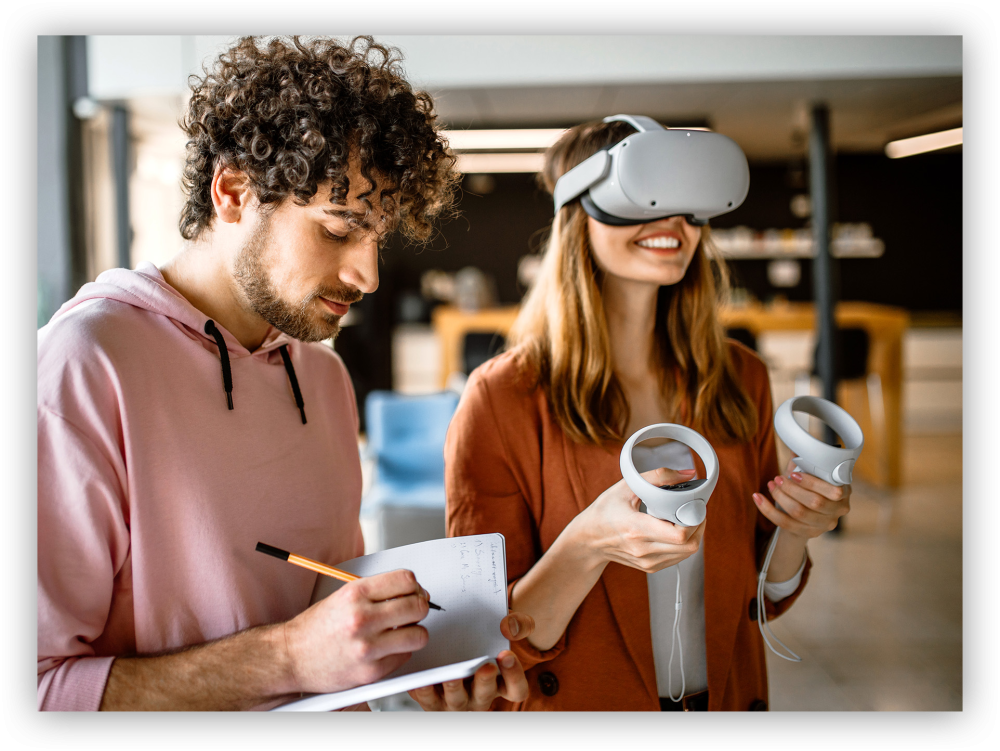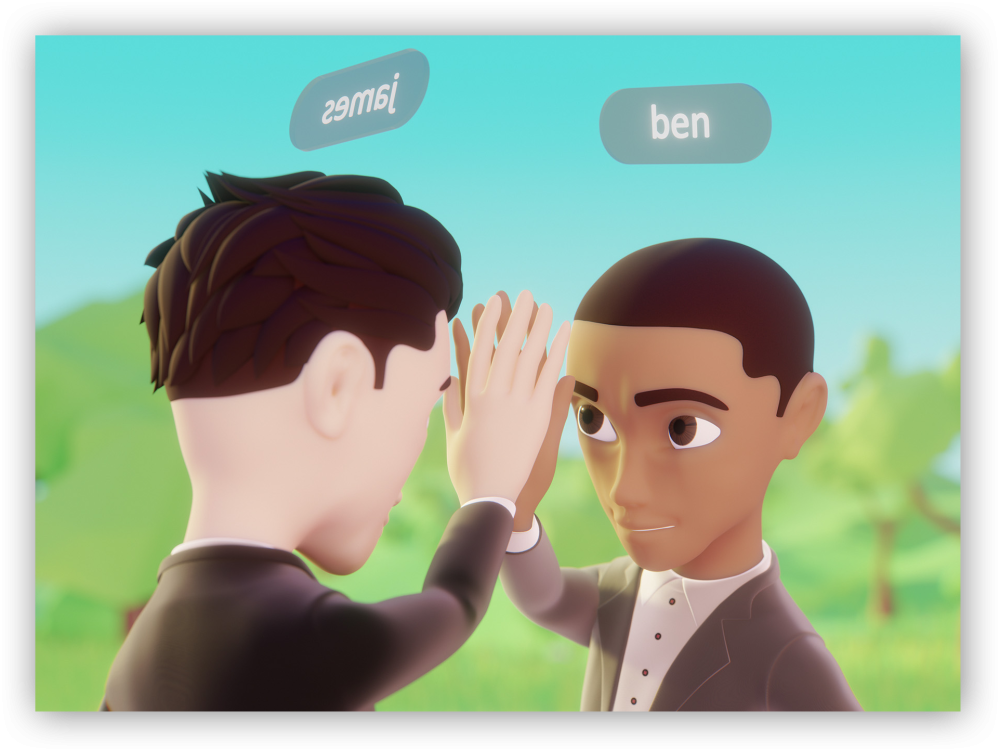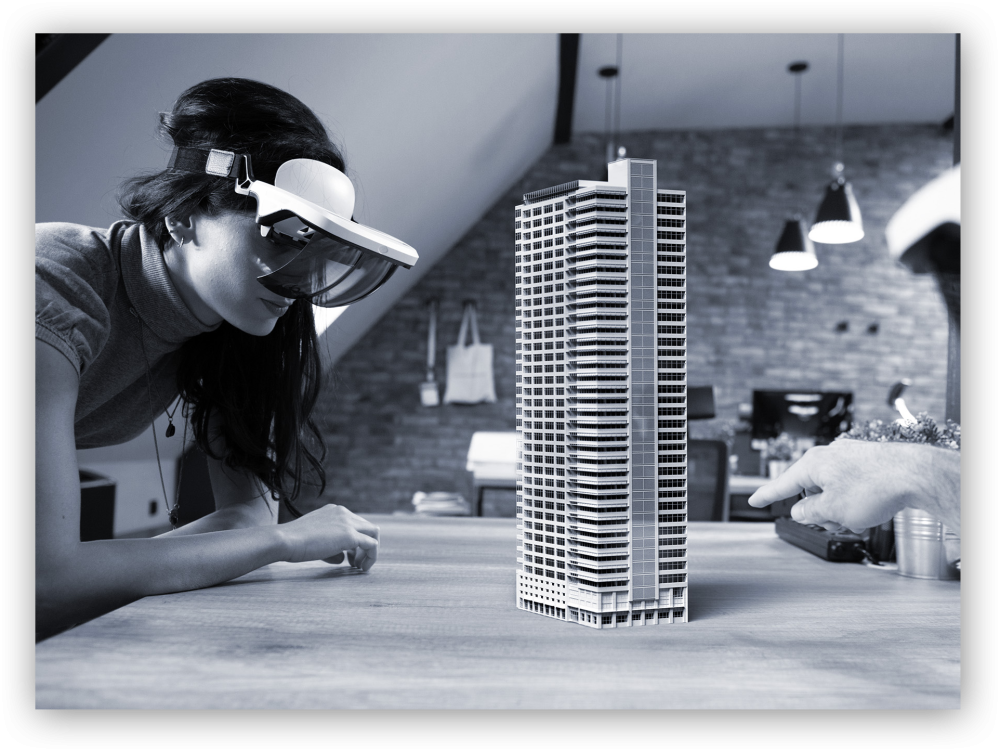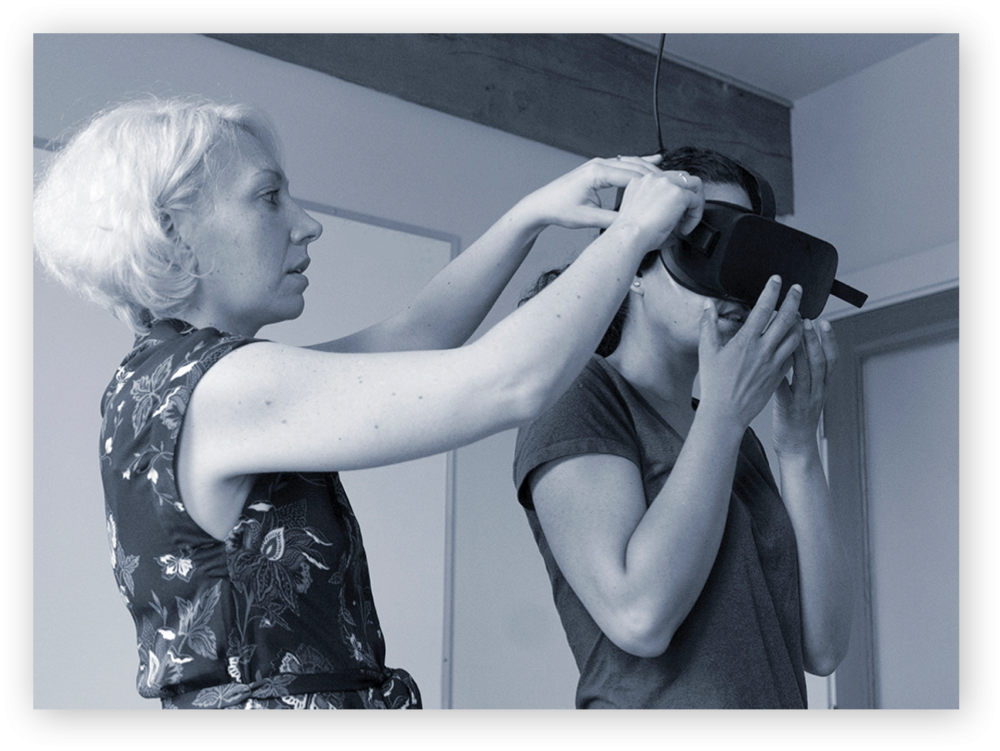Extended Reality and the Metaverse
Exploring extended reality experiences from a human perspective
Client Extended Reality
USER EXPERIENCE FOR XR
Spatial is at the forefront of UX for the Metaverse and XR (Extended Reality).
We have adapted and evolved our practice to understand and improve XR devices and experiences across a variety of contexts.
We have a strong partnership with Meta and have worked on projects with Microsoft, BCIT, and UBC.

AUDIENCE RESEARCH FOR XR APPLICATIONS
Immersive experiences can be powerful and memorable. Understanding your audience is key to identifying the opportunities that XR may bring. How can XR enhance their lives? How big is the opportunity? What experiences would your audience find unique and memorable?
Spatial consultants use a variety of foundational research techniques to uncover strategic insights that offer new ways for companies to engage audiences in rapidly emerging AR/MR and VR applications.
BEHAVIOURAL STUDIES TO EXPLORE THE IMPACT OF XR IN SOCIAL REALMS
Emotional comfort and safety make XR experiences positive, engaging and something your audience will want to return to. But as we know, social interactions can bring trolls, bad actors and negative experiences. How do we mitigate these harms and negative experiences? What creates a healthy ecosystem in social XR?
Spatial’s research of human behaviour and psychology in XR social experiences is helping shape safe, comfortable and healthy spaces.
The team joined the project with such professionalism and, most importantly, curiosity to understand. Some of their greatest strengths are their flexibility and thoughtful approach to every project”Charla Pereira, Principal Design Manager, Microsoft
XR FOR WORK
The use cases for XR in workplace settings is practically limitless. Our clients are deploying apps to monitor heavy industrial equipment, that enable skilled workers in the assembly of complex machinery and connect remotely located teams more seamlessly.
We know there’s a lot of hype around emerging technologies. We take a clear-eyed look at the business, the users and the use cases to define workplace usage scenarios that are realistic and achievable.
Spatial can help business unravel the complexity of XR for industrial applications – what are the opportunities and what might be their impact? What would employees think about this technology assisting them?
USABILITY & VALIDATION RESEARCH FOR XR
XR and immersive 3D experiences are vastly different than the 2D and screen-based experiences we are most familiar with. Many people are experiencing XR for the first time and it’s important that these novel experiences are comfortable and safe.
Spatial has been working with Meta since the initial launch of the Quest to conduct usability, accessibility and validation research, including the universal menu, content discovery, visual segmentation of video into the virtual world and avatars. This has included benchmarking usability KPIs across multiple iterations and ongoing validation research on new features.
DEVICE RESEARCH
As XR devices become more mainstream understanding how people onboard to the hardware is a critical part of the user experience. What blockers do they encounter? Are the functions intuitive and easy to understand? How long does it take to become confident using the device?
The Spatial research team has deep experience testing device hardware. We regularly conduct unboxing studies to evaluate the out of the box experience including onboarding, initial headset fit, device functions and fit and comfort of the headsets. We also have tested new device features that enable augmented reality and advanced features that make use of projected video.
The outcomes of our research enables product teams to make evidence informed decisions for future device design.
PROCESS
Our 3D XR design process encompasses a variety of storytelling and physical ideation techniques. Beginning with classic 2D storyboarding, we quickly move into live action brainstorming using improv techniques to physically act out user scenarios. During this stage we invite domain experts into our process, live as well as in-app prototyping, where we employ video to generate feedback and test our assumptions.
Key to our process is strong reliance on the story arc to take players through a wonderful, awe-inspiring, memorable experience.
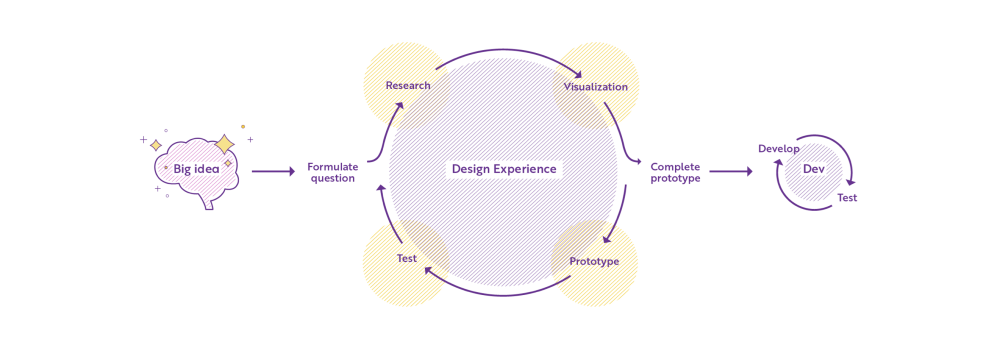
The Spatial team's deep expertise in 3D XR worlds – device and platform expertise, audience behaviourial tendencies and concerns, accessibility and design chops – can set your Extended Reality project on course.
Contact us to find out more.


